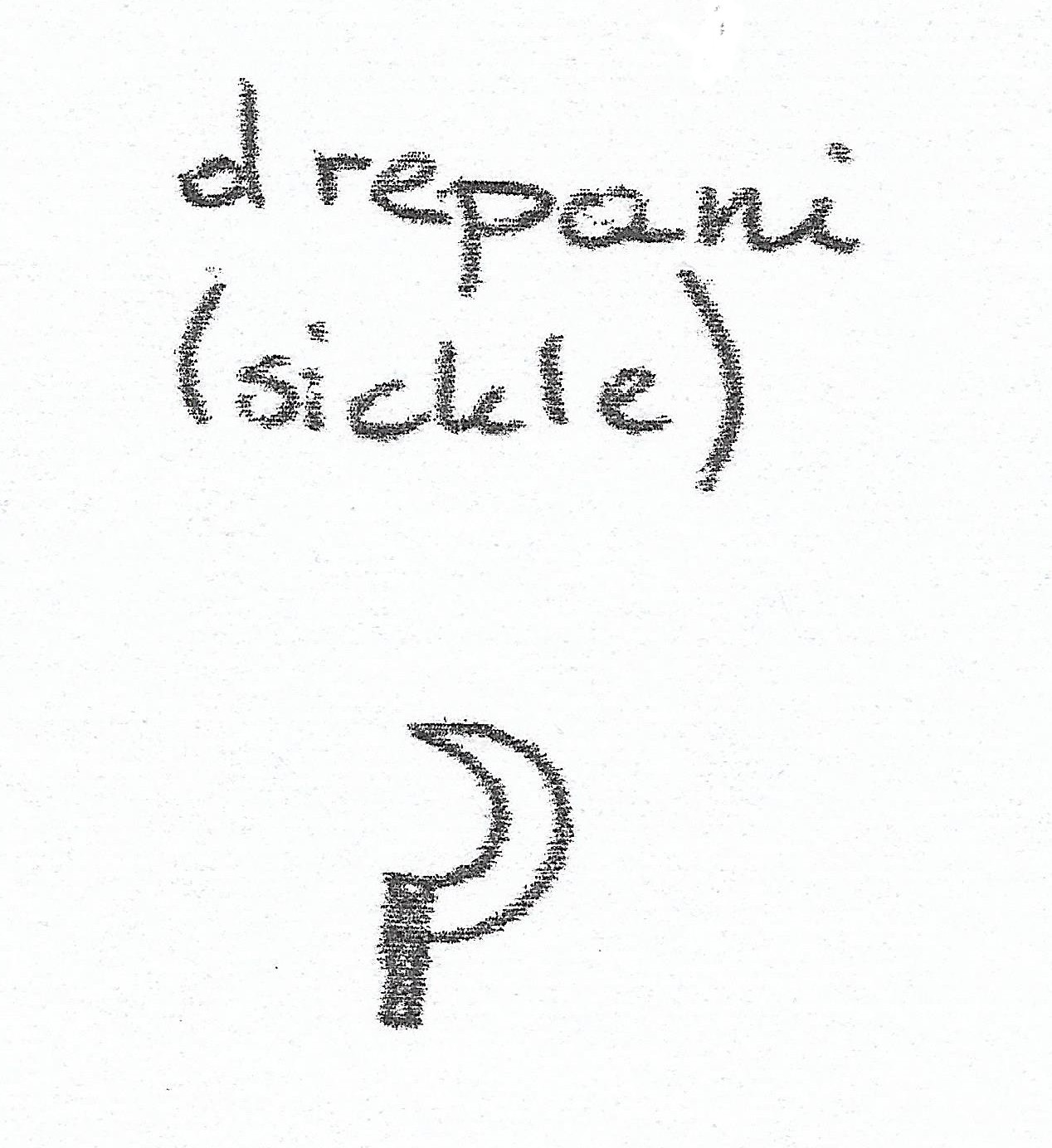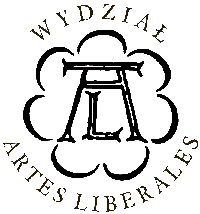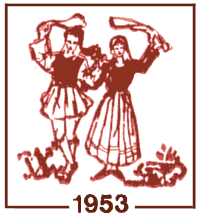| Testimony of: | sickle |
| Source | Ιακωβίδης 1988, 24 |
| Original text | Το δρεπάνιν, το μασαίριν και η τατσά είναι ατομικοί χοροί που συνήθως χορεύονται στην ίδια μελωδία. Ο χορός του δρεπανιού ξεκινά από το θέρος. Οι καλοί θεριστάδες πάνω στη δουλειά "έπαιζαν" το δρεπάνι, έκαναν επιδέξιες και γρήγορες κινήσεις με αυτό γύρω στο κορμί και πάνω απ' το κεφάλι κι έκοβαν ξυστά κουτσούλες (το άκρο του σταχιού με τον καρπό), χωρίς να σταματούν το θέρισμα. Την ημέρα που ποθέριζαν, όταν θα θέριζαν τα τελευταία χωράφια ενός γεωργού, γίνονταν τα ποθέρκα (απειλές των "θεριστάδων" προς τον ιδιοκτήτη για να τους "τάξει", τα διάφορα παιγνίδια, τα τραπεζώματα στο τέλος κ.ά.). Στην περιοχή της Καρπασίας οι παλιοί ονόμαζαν "παίξιμο του δρεπανιού" το χορό του δρεπανιού, το χορό δηλαδή που χορευόταν έως τελευταία στα πανηγύρια και τη γιορτή του κατακλυσμού. |
| English translation | The scythe, the knife and the tatsa were also single dances which used to be danced under the same melody. The dance of the scythe use to begin in the summer. The good harvesters used to play the scythe during work and execute artful and fast moves with it around their bodies and on top of their heads and cut ‘’koutsoules’’ (the tip of the seed which contains the compound) without stopping the harvesting procedure. The very day of the harvesting, when they used to harvest the last fields of a farmer, they used to execute ‘’potherka’’ (threat of the harvesters against the farmer in order to promise them food etc. in the end of their work ) In the district of Karpasia the elder ones used to name the ‘’play of the scythe’’ the dance of the scythe, the dance which used to be executed on the last day of festivals and the celebration on ‘’Kataklysmos’’. |
| Region of occurence | Cyprus - Show on map |
| Function | |
| Symbol in Kinetography score |
|


